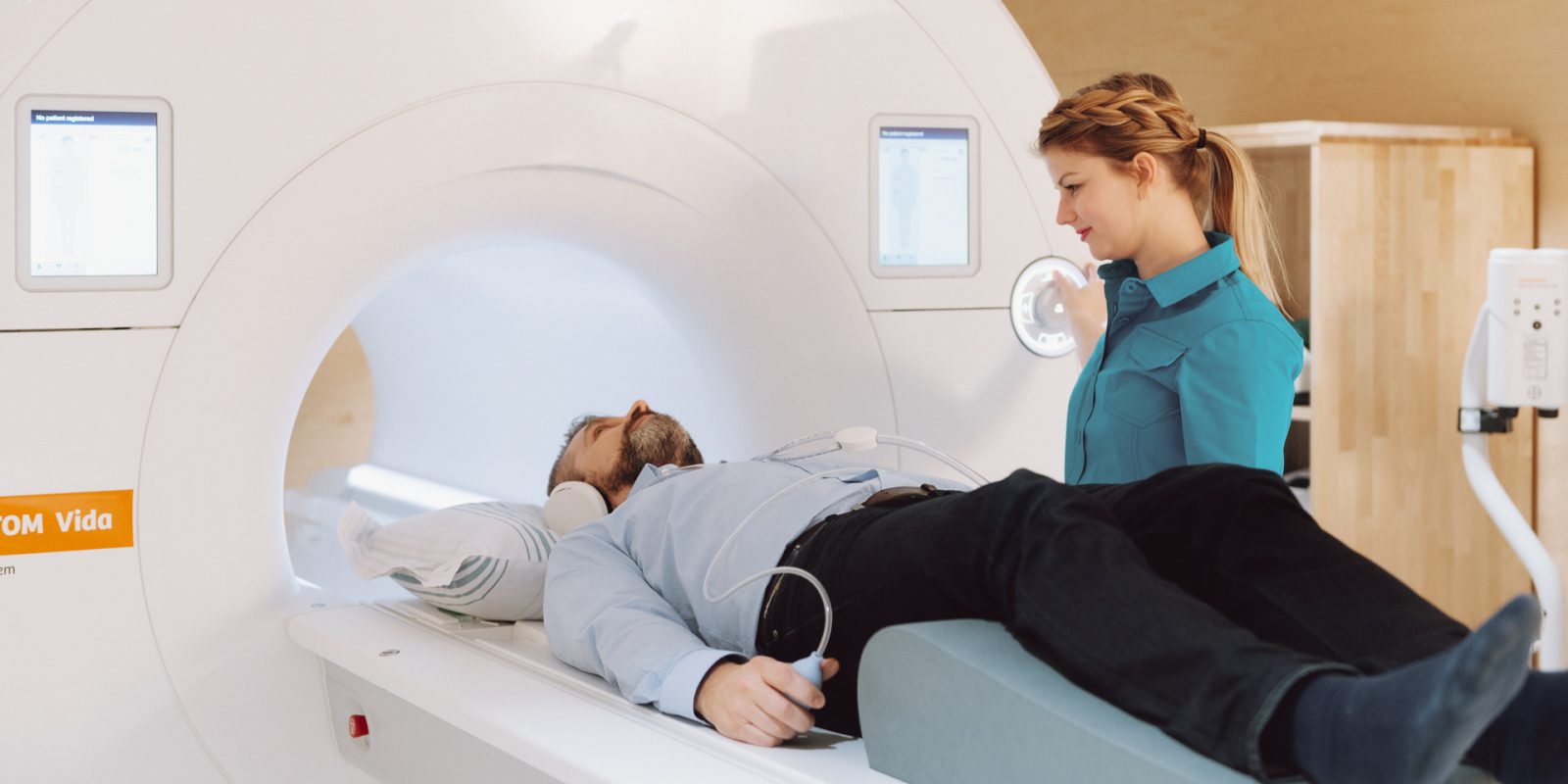Accurate information on aggressiveness and tumor staging form the basis for prostate cancer treatment
10.5.2022 Categories: Articles
Prostate cancer has many faces
As prostate cancer has been studied extensively, its clinical pathology is fairly well known. However, the umbrella of prostate cancer encompasses a wide range of different types of prostate cancers with varying degrees of severity and different characteristics, prognoses and treatments. This makes treatment challenging and often requires an individualised treatment plan in order to achieve the best outcome.
On one end of the spectrum, there are the so-called mild forms of cancer, which are usually detected in older men, which do not cause any symptoms. With these cancers, it can be enough to simply monitor them closely and only start treatment if the situation changes. At the other end of the spectrum, there are the aggressive and uncontrollably growing prostate cancers, usually detected in slightly younger men aged 50–60 years, which require immediate and effective treatment. Between these extremes, there are large numbers of prostate cancer patients with initially mild and slow cancer progression who respond favourably to treatment. This type of cancer can spread to the skeletal system if it is not treated in time.
The PSA test and the new Proclarix and STHLM3 tests are the only way to detect asymptomatic prostate cancer in its early stages
Regular PSA testing can be used to detect asymptomatic prostate cancer in its early stages. Blood tests are taken to carry out the PSA tests. The specialists at Docrates recommend that men aged 50–75 years have their PSA levels checked every year in a PSA test. If your close relatives have been diagnosed with cancer, monitoring and testing should be started even earlier. Proclarix and STHLM3 are new blood tests that can be used to assess the risk of prostate cancer even more effectively than with the PSA test alone.
The Proclarix test is a good tool in situations where the patient’s PSA levels are slightly elevated and there is no absolute certainty about an actual prostate cancer tumor. Proclarix is intended to be used for diagnosing prostate cancer in patients with elevated PSA levels (2–10 ng/ml) and an enlarged prostate.
“With the STHLM3 test, it is possible to diagnose prostate cancers that could not be detected with the PSA test alone when the PSA values are low. When it comes to higher PSA values, the test reduces the need for tissue sampling. As a result, many men can avoid the adverse effects associated with taking tissue samples from the prostate. The test improves the chances of detecting aggressive forms of cancer,” says Timo Joensuu, Specialist in Medical Oncology and Radiotherapy at Docrates Cancer Center.
Early and accurate diagnostics ensure the best treatment outcome
If prostate cancer is suspected in a patient based on, for example, elevated PSA levels or abnormal physical prostate exam findings, the doctor will prescribe additional tests in order to make a diagnosis, such as a Proclarix or STHLM3 test and/or an MRI scan of the prostate.
In order to make an accurate cancer diagnosis, a tissue sample must be taken, which will also reveal how aggressive the cancer is. This is done by collecting a needle biopsy from the prostate. Ultrasound guided biopsy is used to ascertain the prostate cancer diagnosis. MRI scan data is also used in the sampling. The histological grade (degree of malignancy) of prostate cancer is determined by a pathologist on the basis of a microscopic examination, using the international Gleason grading system.
Docrates Cancer Center has state-of-the-art diagnostic equipment, such as MRI and PET diagnostics using radiopharmaceuticals. This equipment, combined with the competence of our clinical staff, allows us to ascertain the tumor staging of prostate cancer highly accurately and thus to target the treatment optimally.
MRI and PET-CT scans are used to determine extent and tumor staging
It is important to get a reliable picture of the extent of the cancer in the prostate. An MRI scan is always required before making the final decision on prostatectomy surgery or radiotherapy, preferably already before taking a biopsy. An MRI scan shows whether the cancer has spread beyond the prostate. If the cancer spreads to the sphincter area, its surgical removal is particularly difficult as the sphincter may be damaged during surgery or it may be impossible to completely remove the cancer tissue when trying to protect the sphincter muscle. In such cases, targeting radiotherapy in the urethra area is a more comprehensive solution and a more likely cure. At the same time, the possible adverse effects related to employing two different types of treatment at the same time can be avoided. Radiotherapy can also eliminate cancer cells located outside the prostate capsule more thoroughly in a targeted fashion.
MRI scans and PET diagnostics give the most reliable idea as to whether the prostate cancer has tumor staging beyond the prostate. Docrates Cancer Center has years of experience in performing MRI scans for prostate cancer patients. Our Magnetom Vida 3T MRI scanner provides accurate data on the cancer type and tumor shape in the diagnosis of prostate cancer.
In PET-CT scans, radioactive, fluorine-labelled tracers that move into cancer cells or onto their surface. In prostate cancer, the tracers move into the surface structures of cancer cells (prostate-specific membrane antigen, PSMA) or to areas where bone metabolism is accelerated (sodium fluoride, NaF). A pronounced infiltration is deemed abnormal in an area where physiological infiltrations are not usually found. The doctor always selects the PET tracer to be used on an individual basis. Docrates has a number of tracers at its disposal for the diagnosis of prostate cancer. Of these, PSMA is particularly sensitive in identifying postoperative or post-radiotherapy recurrences of prostate cancer even at very low PSA levels, as well as the spread of early-stage prostate cancer to lymph nodes, for example. PSMA enables more accurate prostate cancer diagnostics. This means that the treatment can be better tailored to promote a good quality of life. The NaF tracer is used to determine the spread of prostate cancer into the skeletal system.
Tumor profiling helps with treatment targeting
Docrates Cancer Center makes use of the knowledge of both the human genome and the cancer genome in its treatments. Docrates has at its disposal a number of genetic test and other tests on cancer tumors or on blood to make pharmacotherapeutic choices in exceptional situations. Learn more about the molecular profiling of cancer here.
Response to treatment is actively monitored under the leadership of an expert team
At Docrates Cancer Center, the direction of examinations and the treatment is regularly reviewed by monitoring the development of the PSA values, by imaging examinations and, if necessary, other examinations along the patient’s treatment path. This is done in order to achieve an optimal outcome for everyone with cancer.
The permanent professional staff at Docrates consists of specialists in medical oncology, urologists as well as an experienced radiologist specialised in cancer imaging and a specialist in nuclear medicine. This ensures uninterrupted and instantaneous dialogue between the imaging experts and attending doctors.













